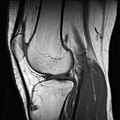Instruments used in radiology
Radiology is a medical specialty that uses imaging to diagnose and treat diseases within the body. A variety of imaging techniques such as X-ray radiography, Ultrasound, Computed Tomography (CT), Nuclear medicine including Positron Emission Tomography (PET) and Magnetic Resonance Imaging (MRI) are used to diagnose or treat diseases. Interventional radiology is the performance of medical procedures with the guidance of imaging technologies. The acquisition of medical images is usually carried out by the Radiographer, often known as a Radiologic Technologist. Depending on location, the Radiologist may interpret the images and write a report.
Instruments used in Radiology[edit]
X-ray Machine[edit]
An X-ray machine is one of the most common tools in radiology. It uses ionizing radiation to create images of the inside of the body. It is often used to view bones and can be used to diagnose fractures, infections, and tumors.
CT Scanner[edit]
A CT scanner uses X-rays and a computer to create detailed images of the inside of the body. It can provide more detailed information than standard X-rays and is often used to diagnose diseases or to plan medical treatments.
MRI Machine[edit]
An MRI machine uses a magnetic field and radio waves to create detailed images of the inside of the body. It is often used to diagnose conditions in the brain, spine, joints, and soft tissues.
Ultrasound Machine[edit]
An Ultrasound machine uses high-frequency sound waves to create images of the inside of the body. It is often used to view organs and structures within the body and is commonly used during pregnancy.
PET Scanner[edit]
A PET scanner uses a radioactive substance, called a tracer, to look for disease in the body. It is often used to detect cancer, heart problems, and brain disorders.
Nuclear Medicine Camera[edit]
A Nuclear medicine camera is used to create images of the body and certain diseases which are seen with a nuclear medicine study. It uses a small amount of radioactive material to diagnose, evaluate or treat a variety of diseases.
See Also[edit]
-
Instruments used in radiology
-
Instruments used in radiology
-
Instruments used in radiology
-
Instruments used in radiology
-
Instruments used in radiology
-
Instruments used in radiology
Ad. Transform your life with W8MD's Budget GLP-1 injections from $75


W8MD offers a medical weight loss program to lose weight in Philadelphia. Our physician-supervised medical weight loss provides:
- Weight loss injections in NYC (generic and brand names):
- Zepbound / Mounjaro, Wegovy / Ozempic, Saxenda
- Most insurances accepted or discounted self-pay rates. We will obtain insurance prior authorizations if needed.
- Generic GLP1 weight loss injections from $75 for the starting dose.
- Also offer prescription weight loss medications including Phentermine, Qsymia, Diethylpropion, Contrave etc.
NYC weight loss doctor appointmentsNYC weight loss doctor appointments
Start your NYC weight loss journey today at our NYC medical weight loss and Philadelphia medical weight loss clinics.
- Call 718-946-5500 to lose weight in NYC or for medical weight loss in Philadelphia 215-676-2334.
- Tags:NYC medical weight loss, Philadelphia lose weight Zepbound NYC, Budget GLP1 weight loss injections, Wegovy Philadelphia, Wegovy NYC, Philadelphia medical weight loss, Brookly weight loss and Wegovy NYC
|
WikiMD's Wellness Encyclopedia |
| Let Food Be Thy Medicine Medicine Thy Food - Hippocrates |
Medical Disclaimer: WikiMD is not a substitute for professional medical advice. The information on WikiMD is provided as an information resource only, may be incorrect, outdated or misleading, and is not to be used or relied on for any diagnostic or treatment purposes. Please consult your health care provider before making any healthcare decisions or for guidance about a specific medical condition. WikiMD expressly disclaims responsibility, and shall have no liability, for any damages, loss, injury, or liability whatsoever suffered as a result of your reliance on the information contained in this site. By visiting this site you agree to the foregoing terms and conditions, which may from time to time be changed or supplemented by WikiMD. If you do not agree to the foregoing terms and conditions, you should not enter or use this site. See full disclaimer.
Credits:Most images are courtesy of Wikimedia commons, and templates, categories Wikipedia, licensed under CC BY SA or similar.
Translate this page: - East Asian
中文,
日本,
한국어,
South Asian
हिन्दी,
தமிழ்,
తెలుగు,
Urdu,
ಕನ್ನಡ,
Southeast Asian
Indonesian,
Vietnamese,
Thai,
မြန်မာဘာသာ,
বাংলা
European
español,
Deutsch,
français,
Greek,
português do Brasil,
polski,
română,
русский,
Nederlands,
norsk,
svenska,
suomi,
Italian
Middle Eastern & African
عربى,
Turkish,
Persian,
Hebrew,
Afrikaans,
isiZulu,
Kiswahili,
Other
Bulgarian,
Hungarian,
Czech,
Swedish,
മലയാളം,
मराठी,
ਪੰਜਾਬੀ,
ગુજરાતી,
Portuguese,
Ukrainian






